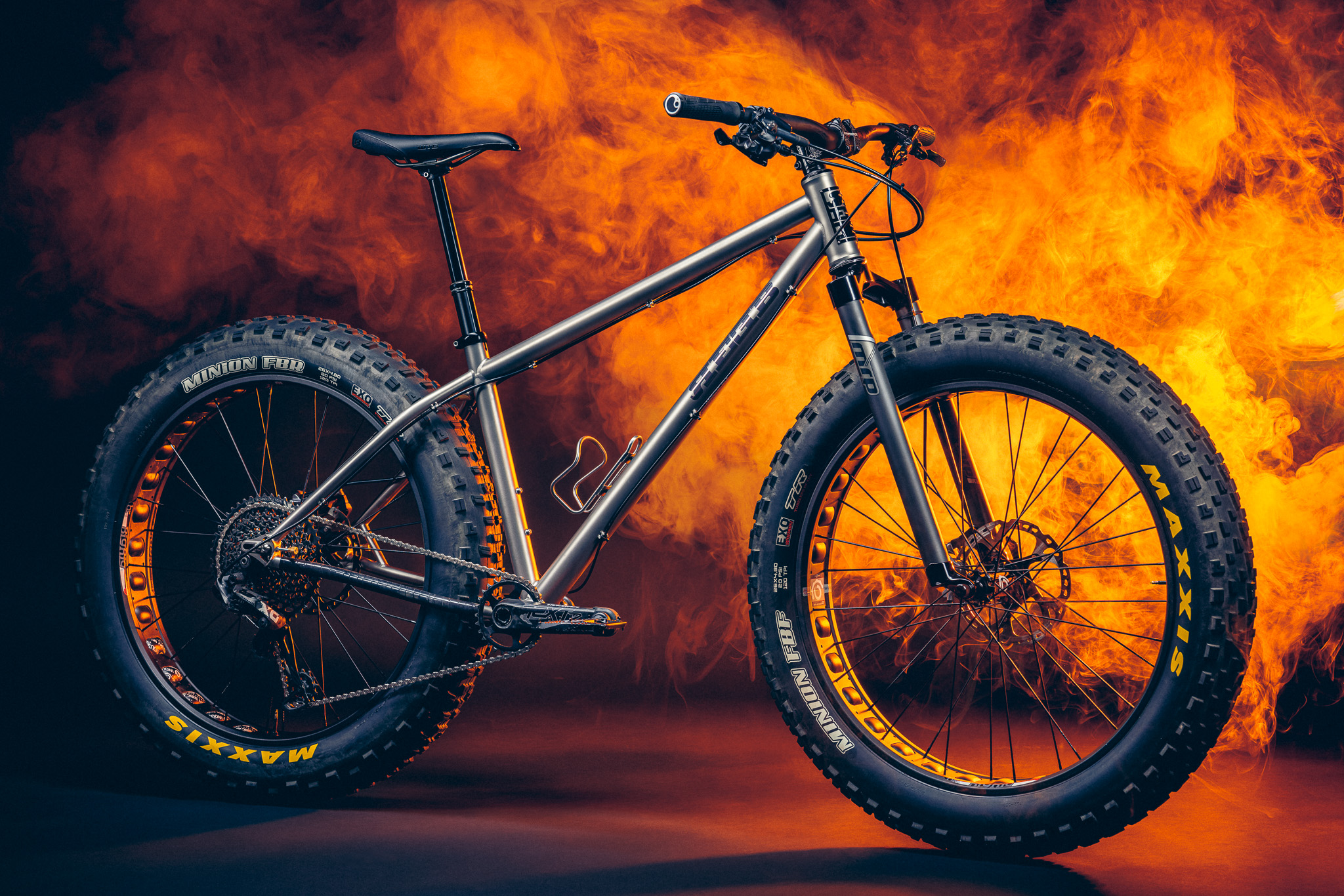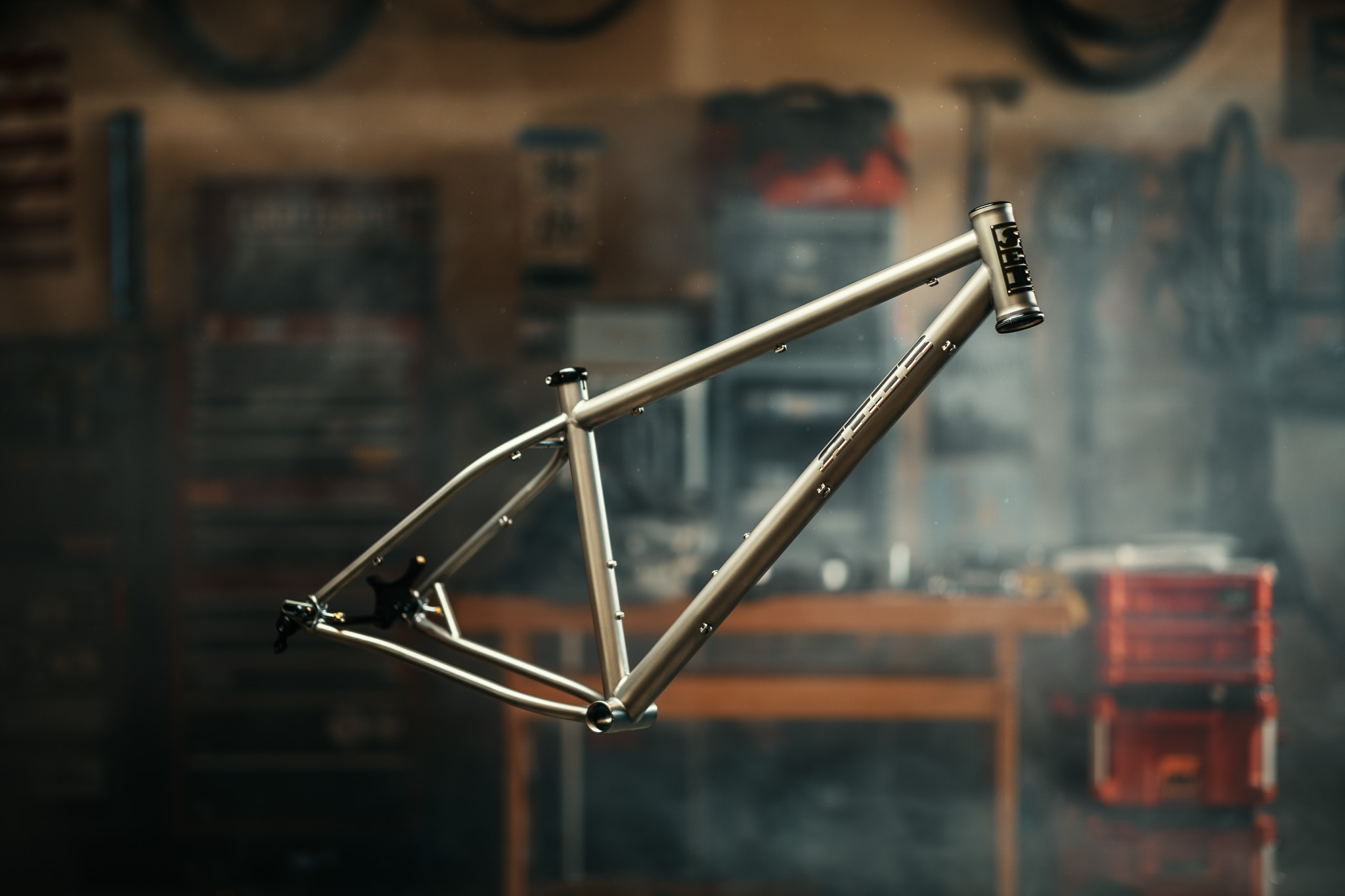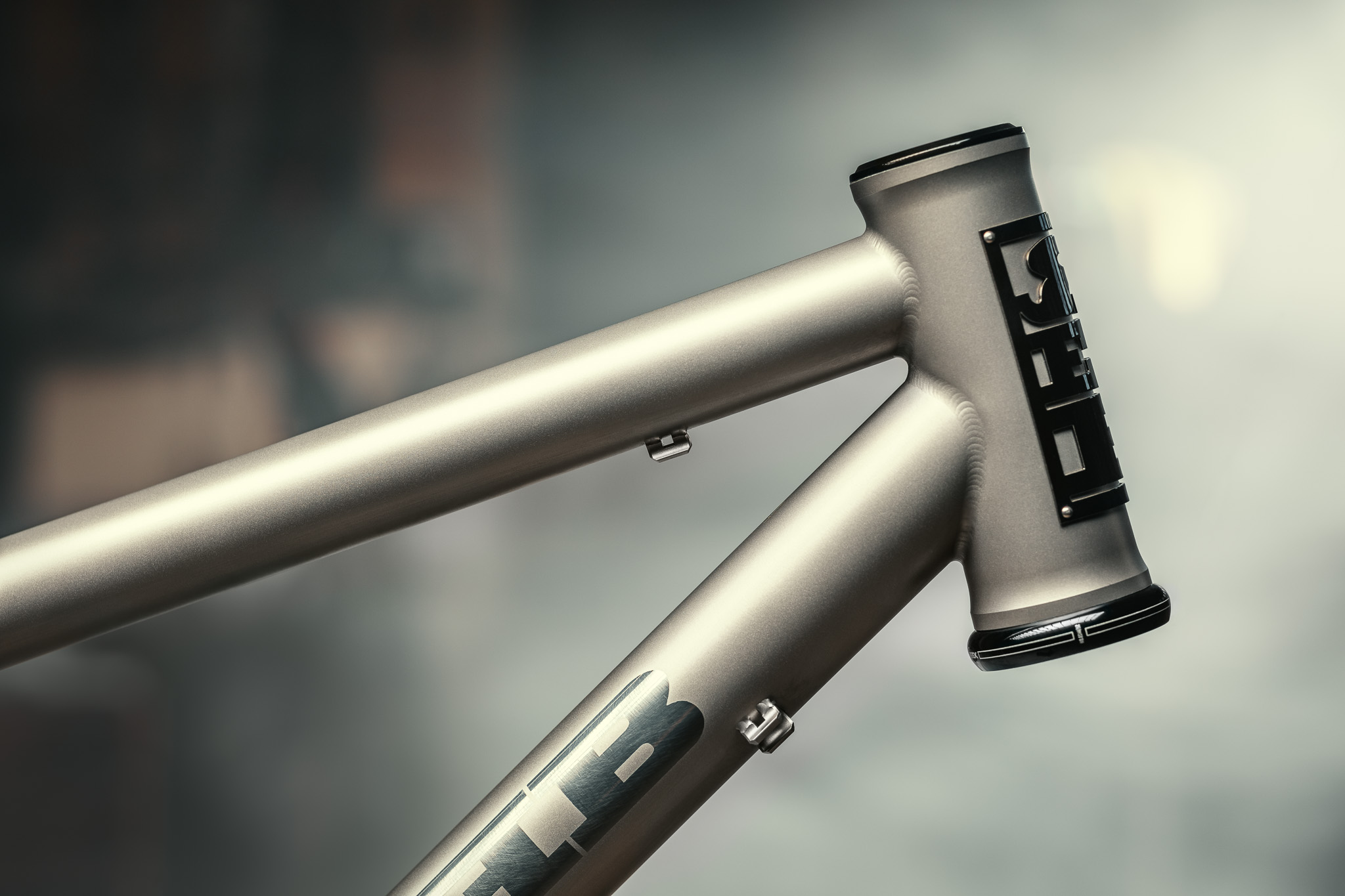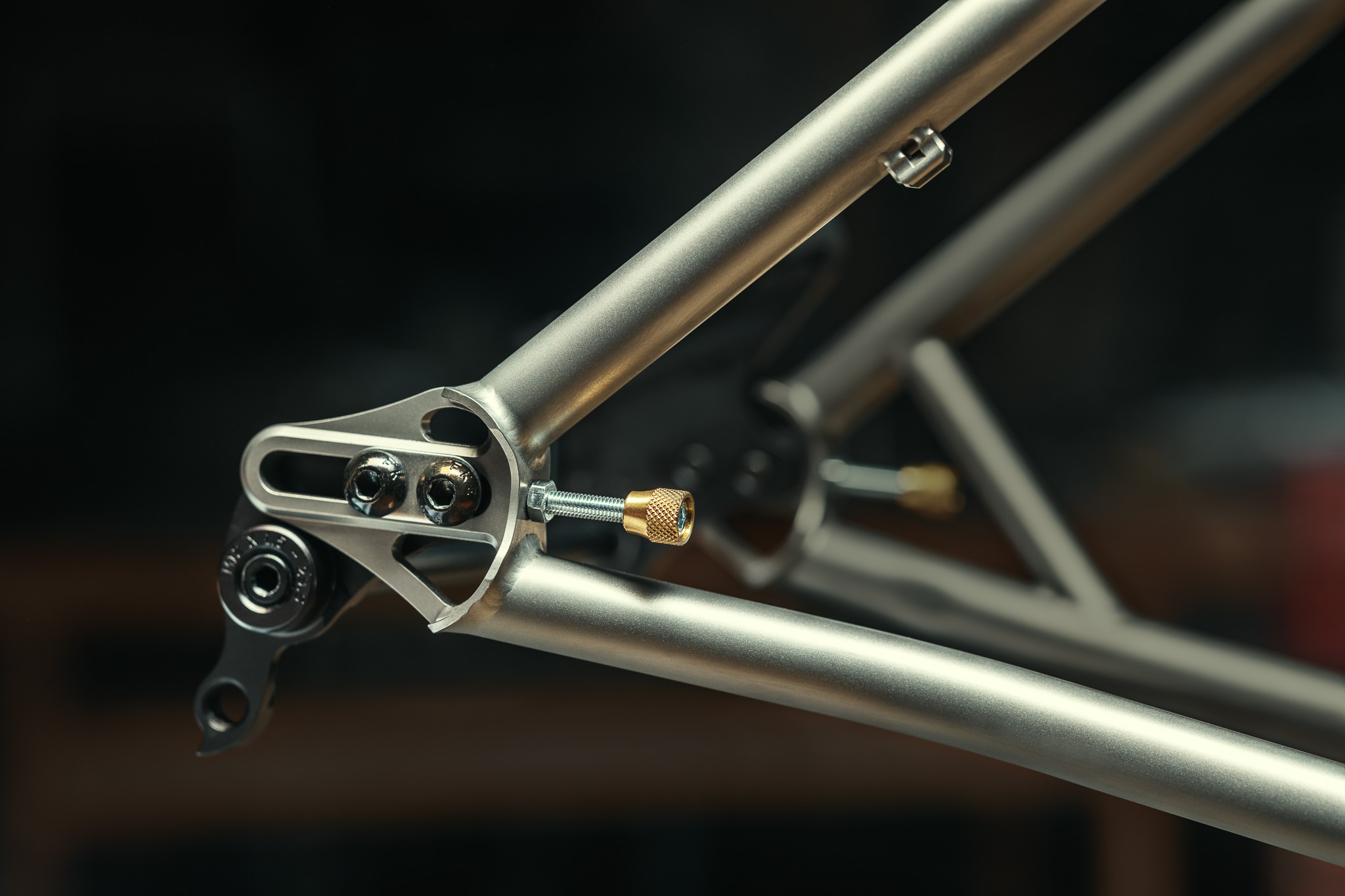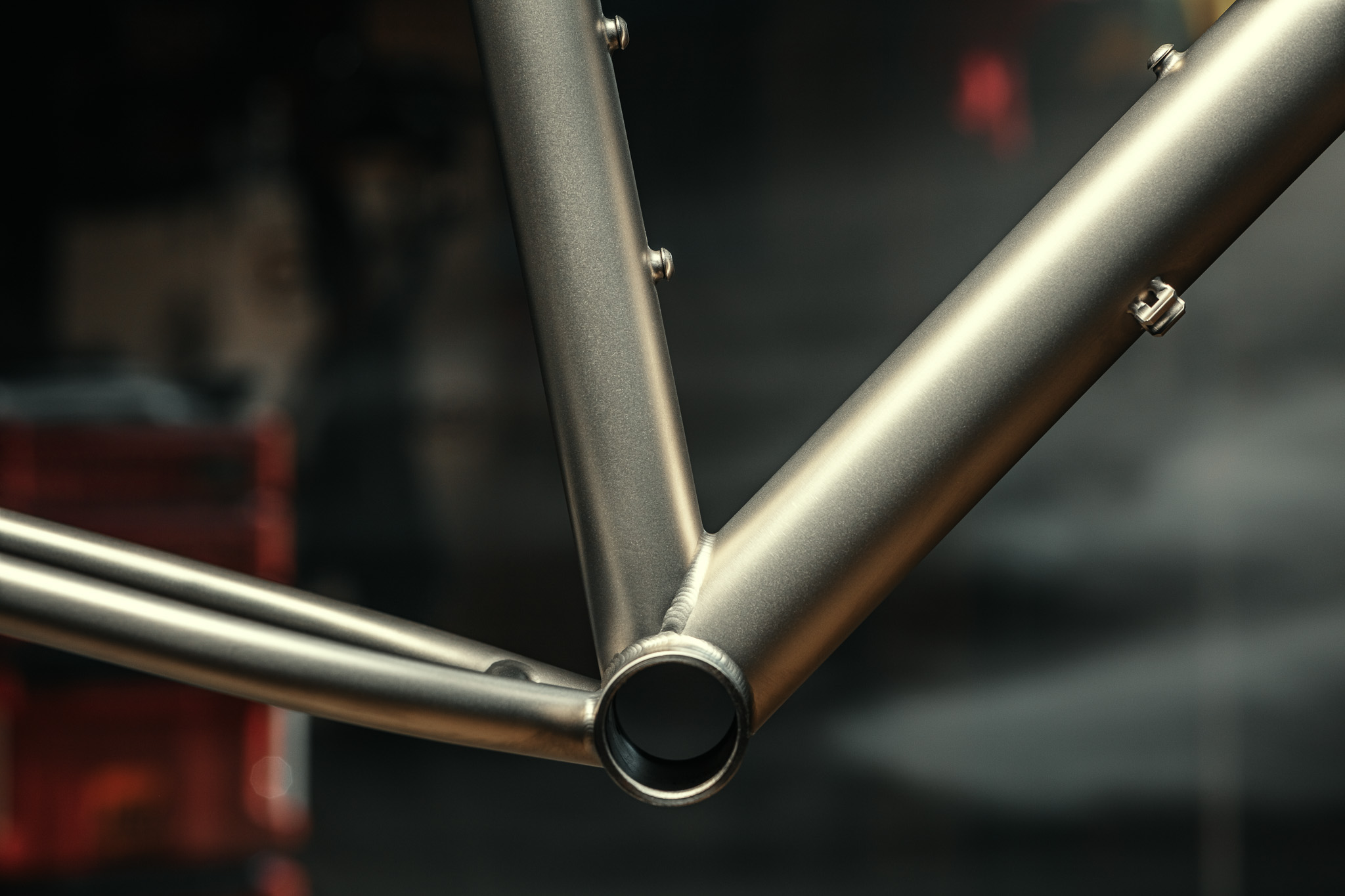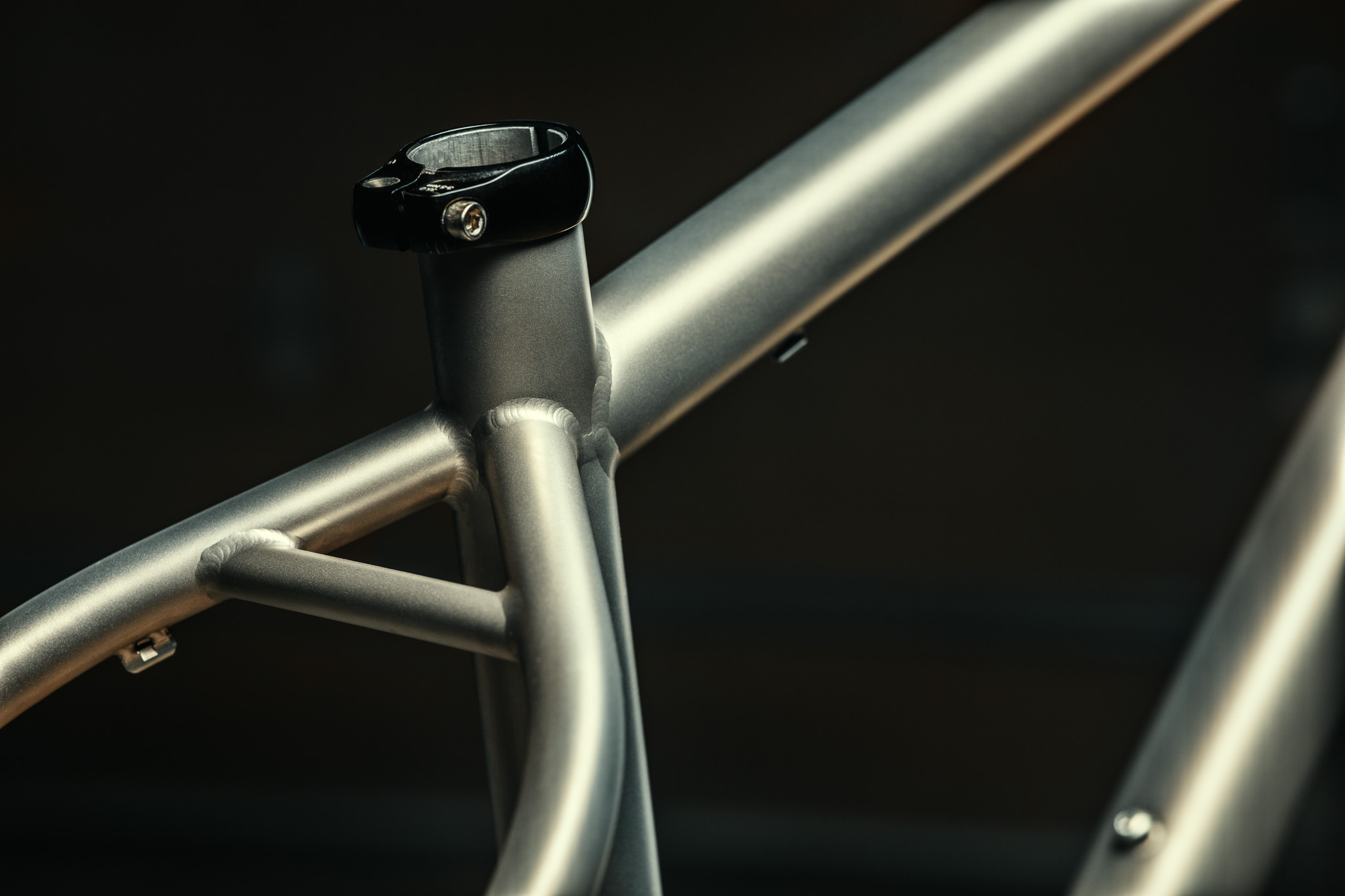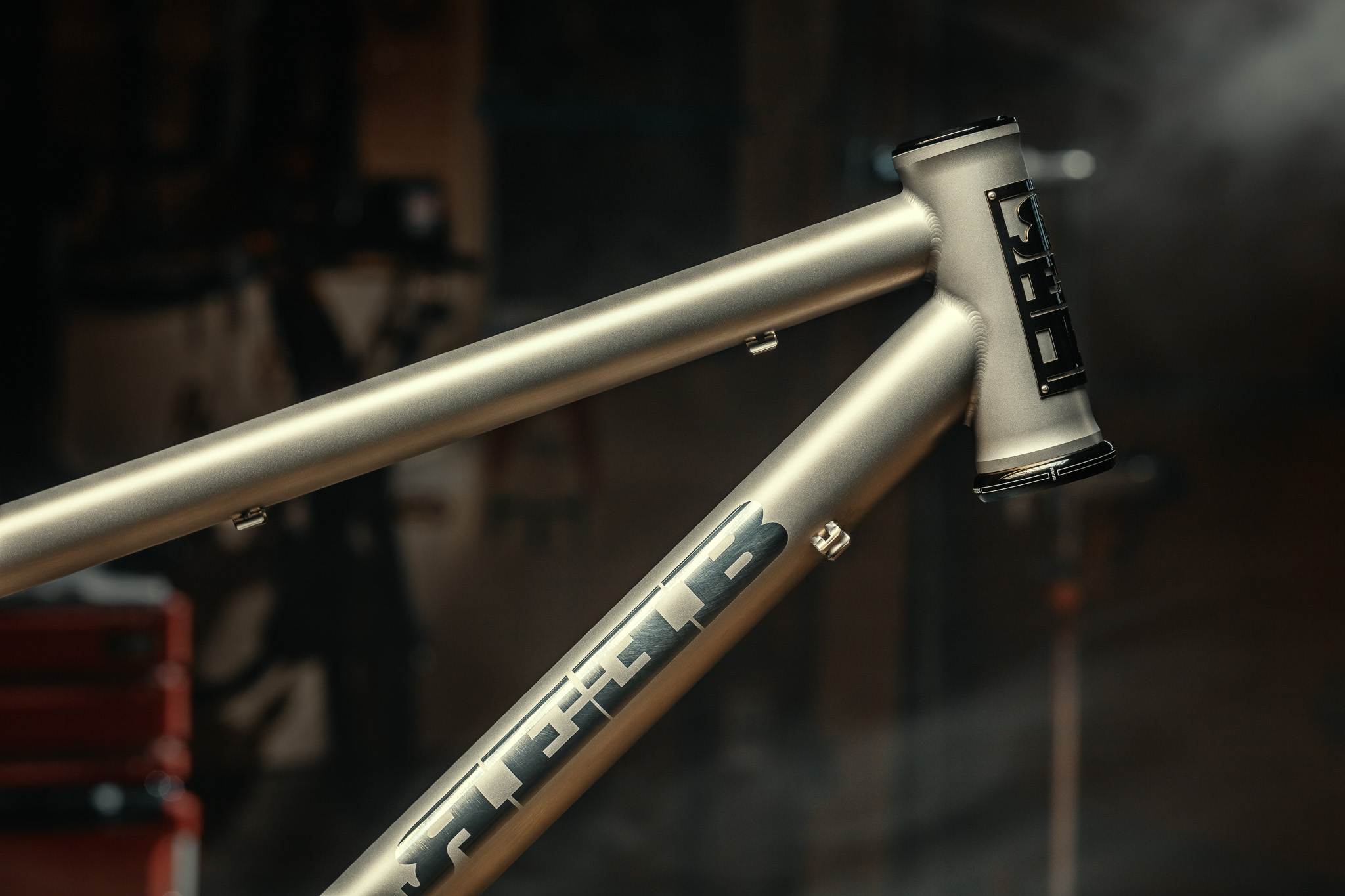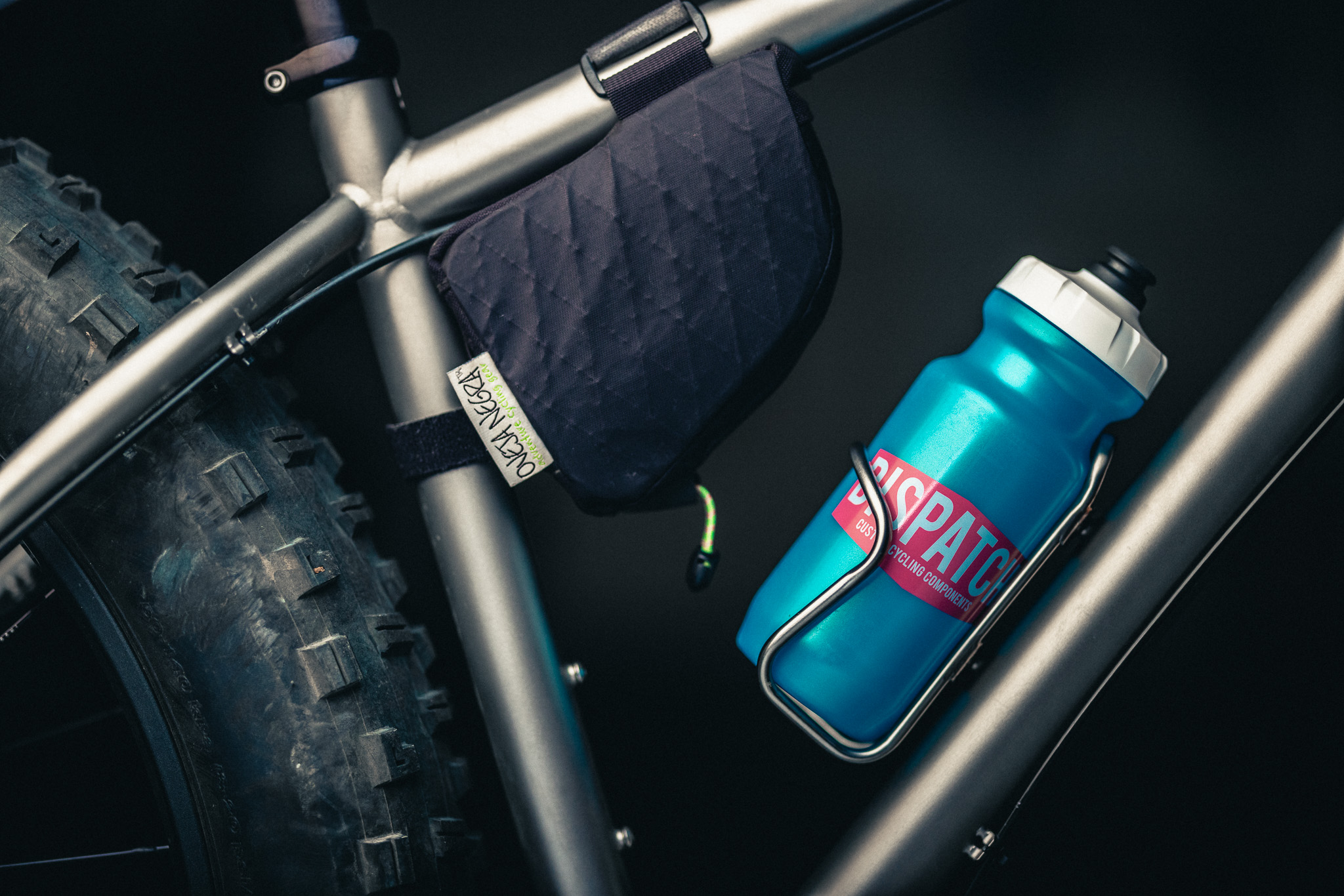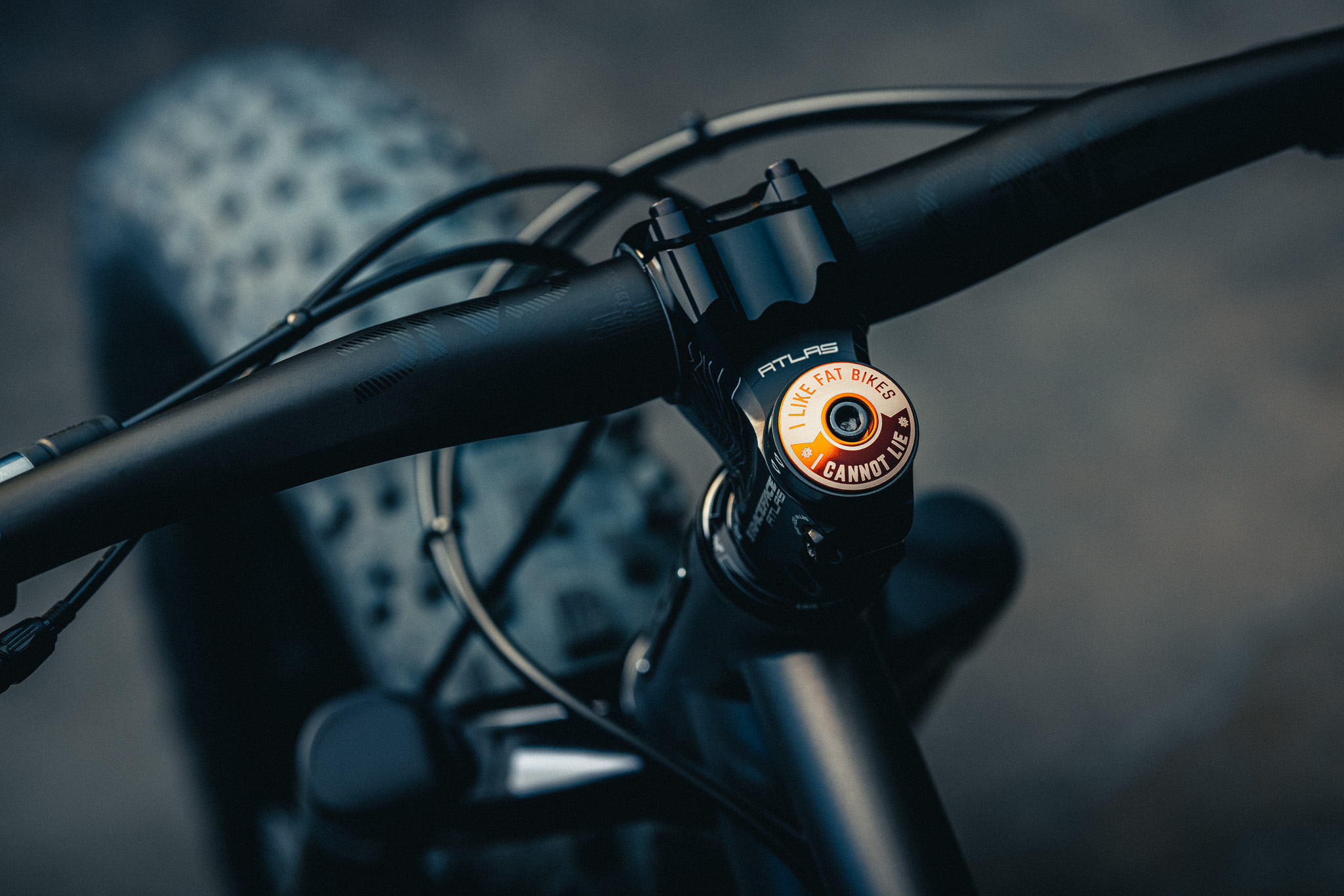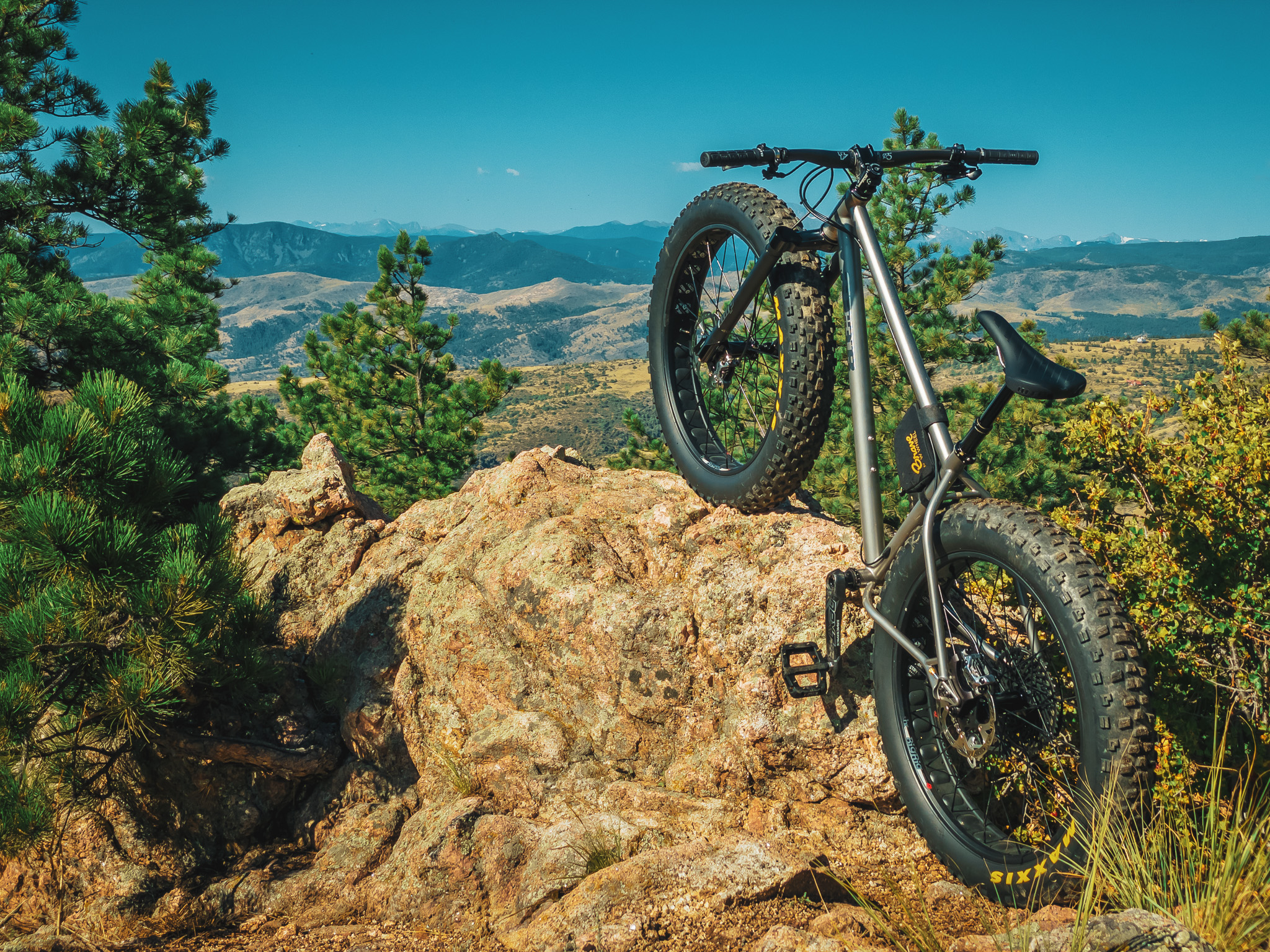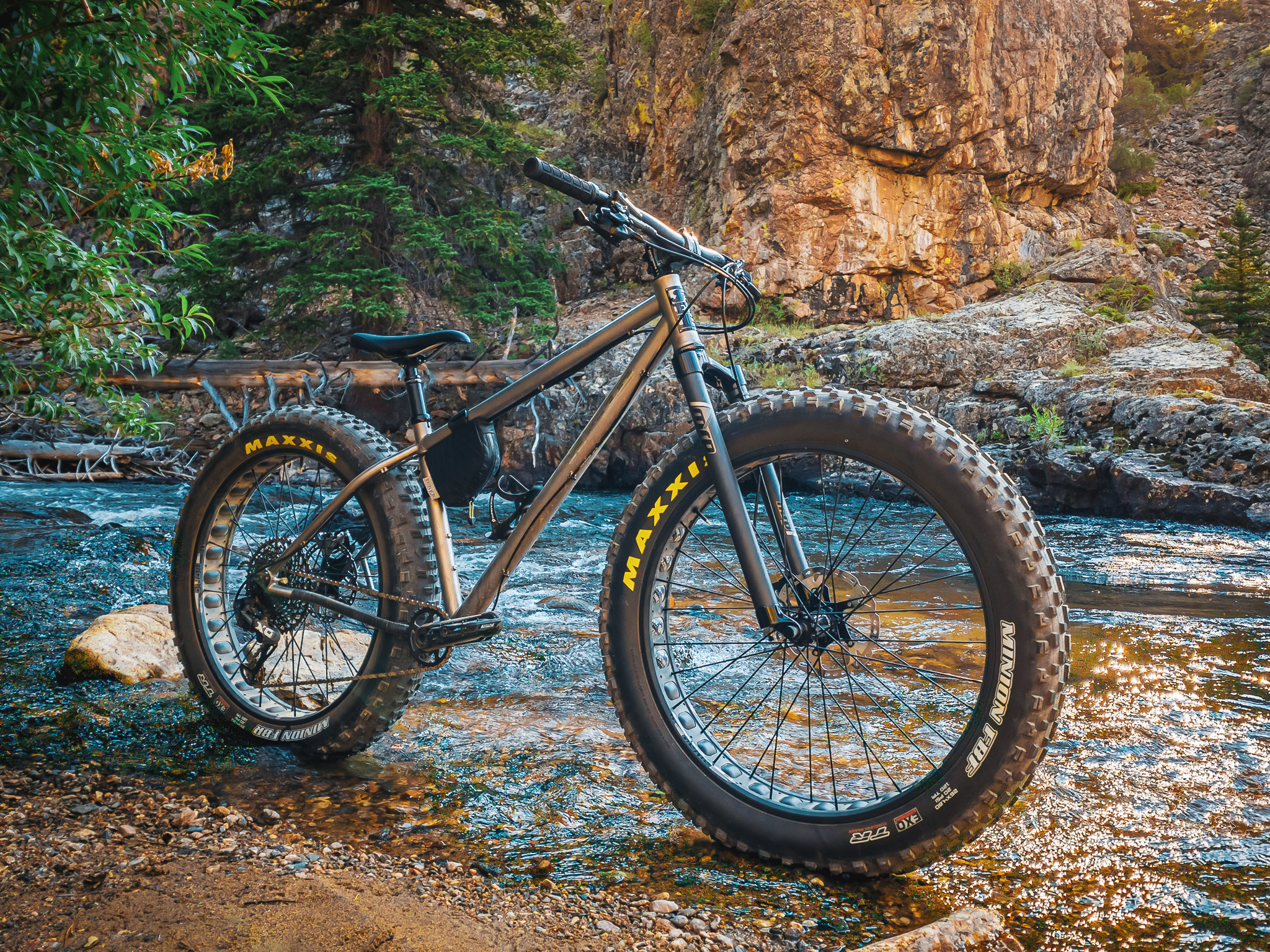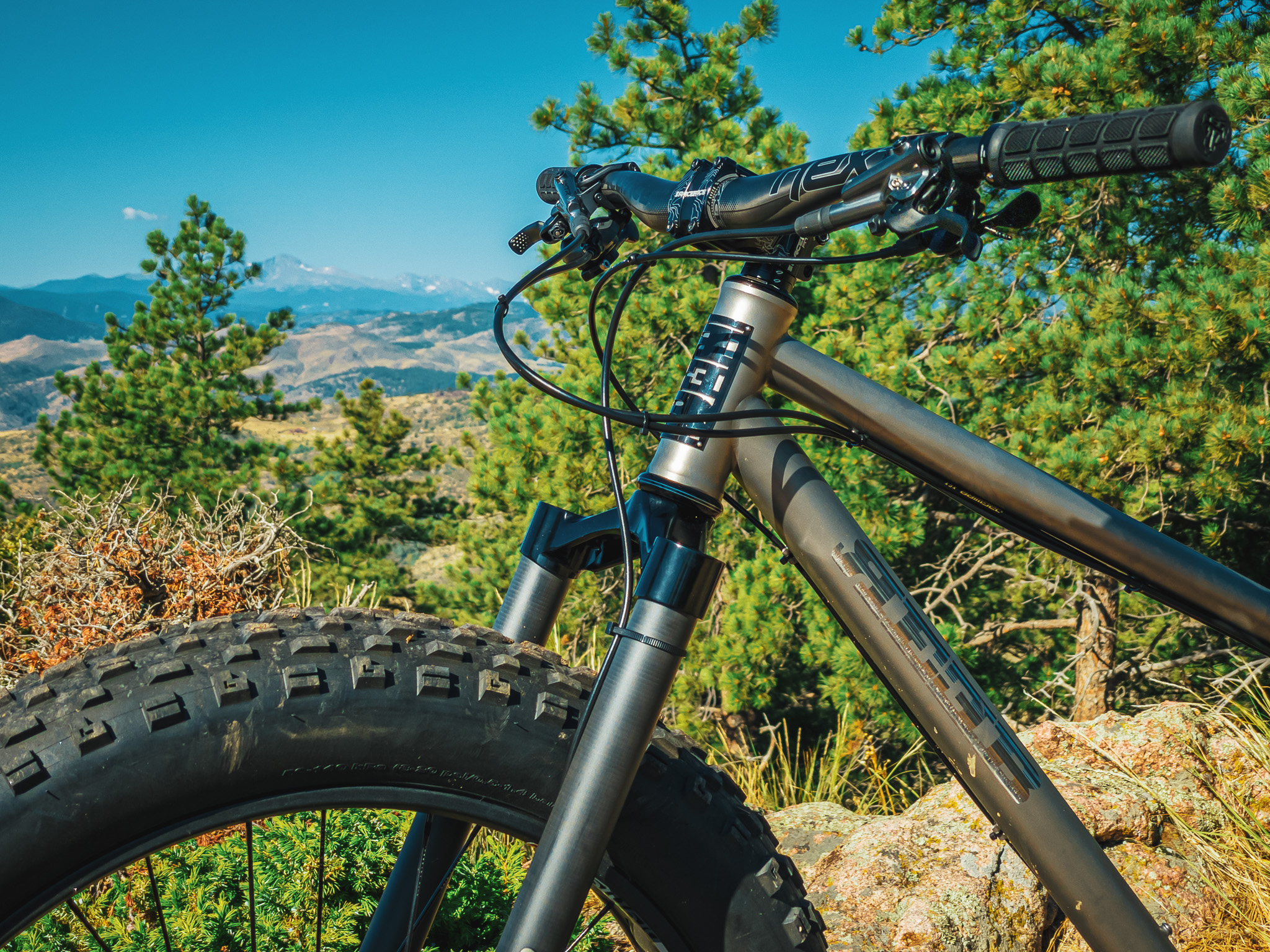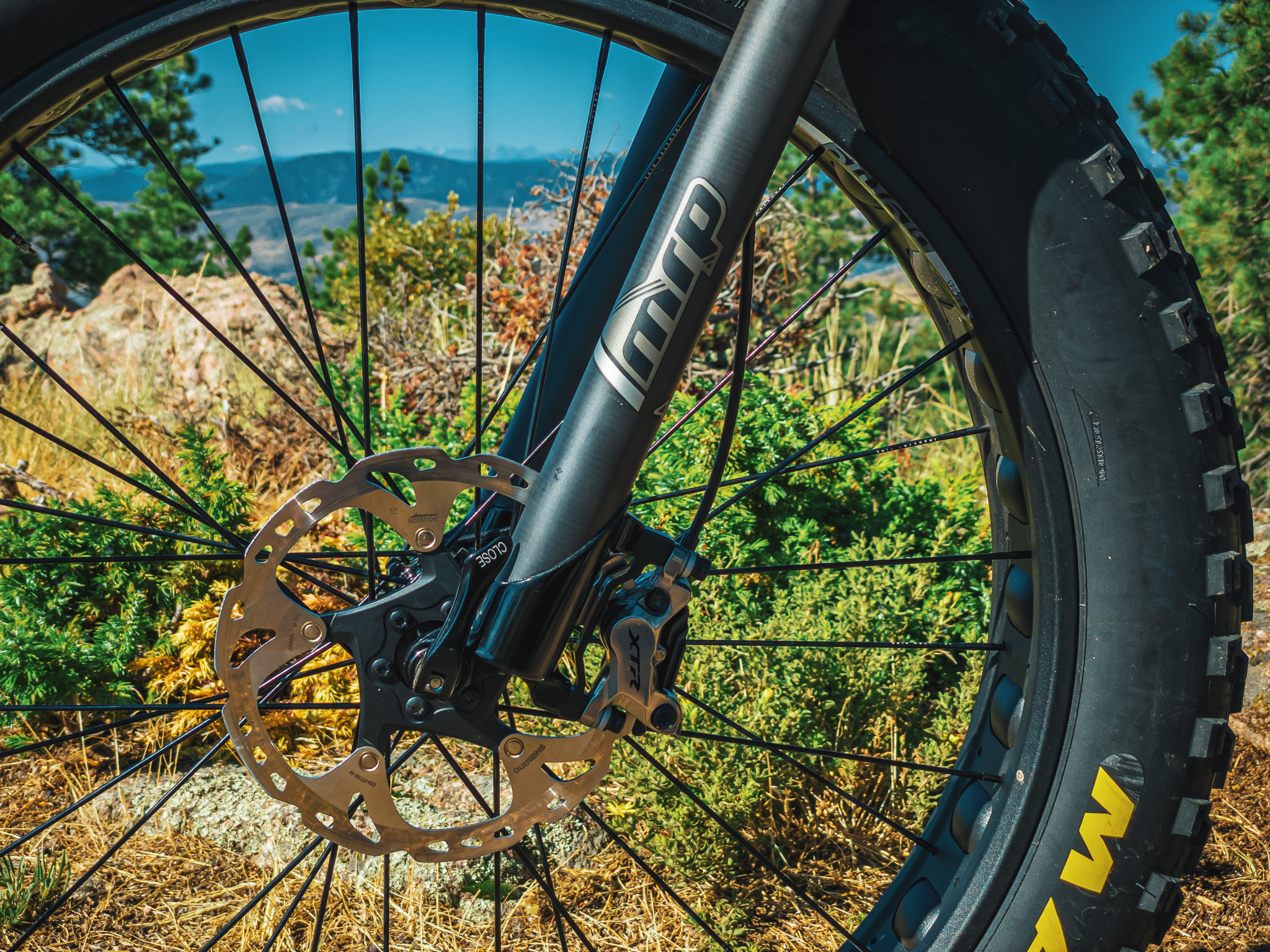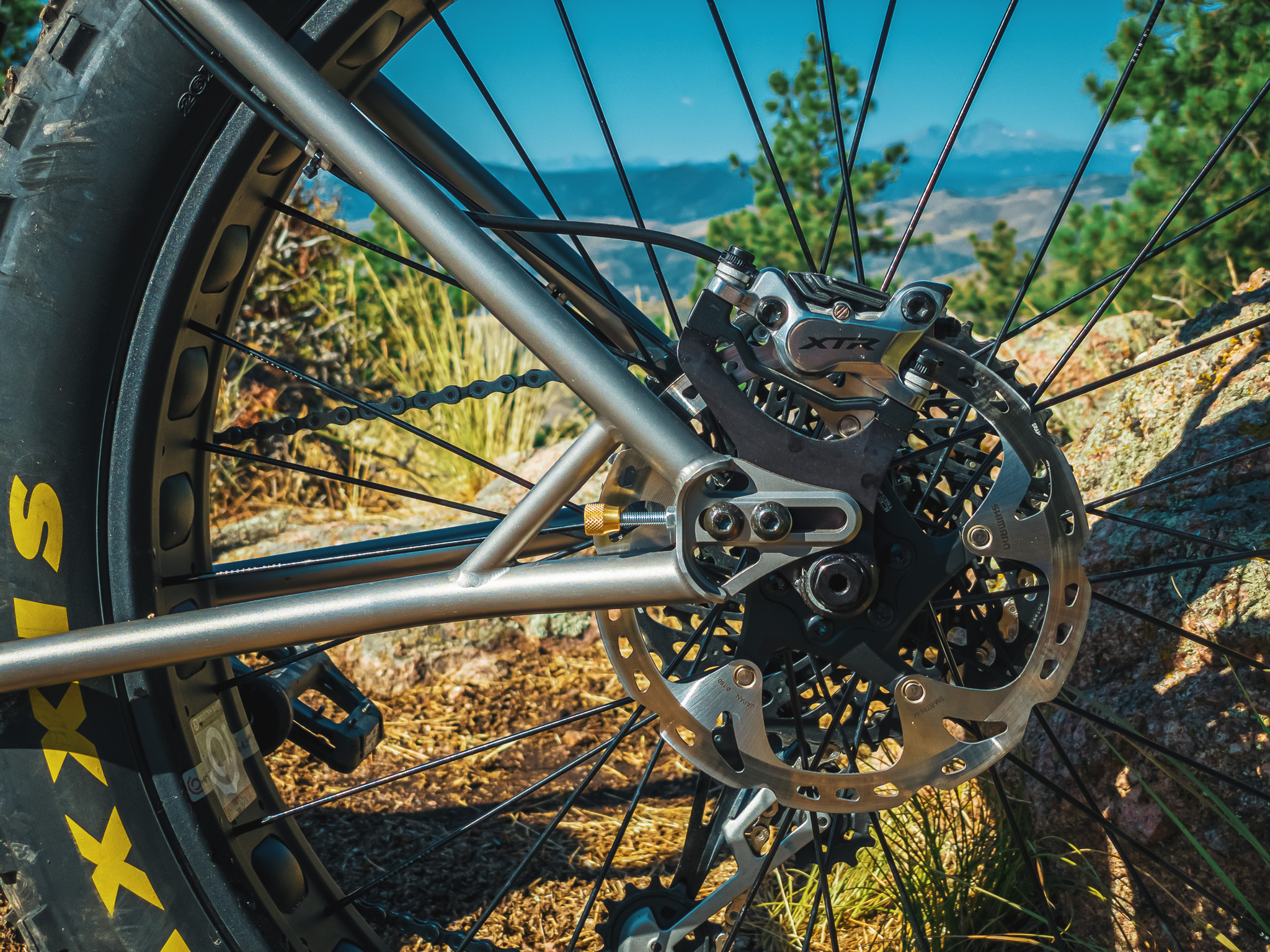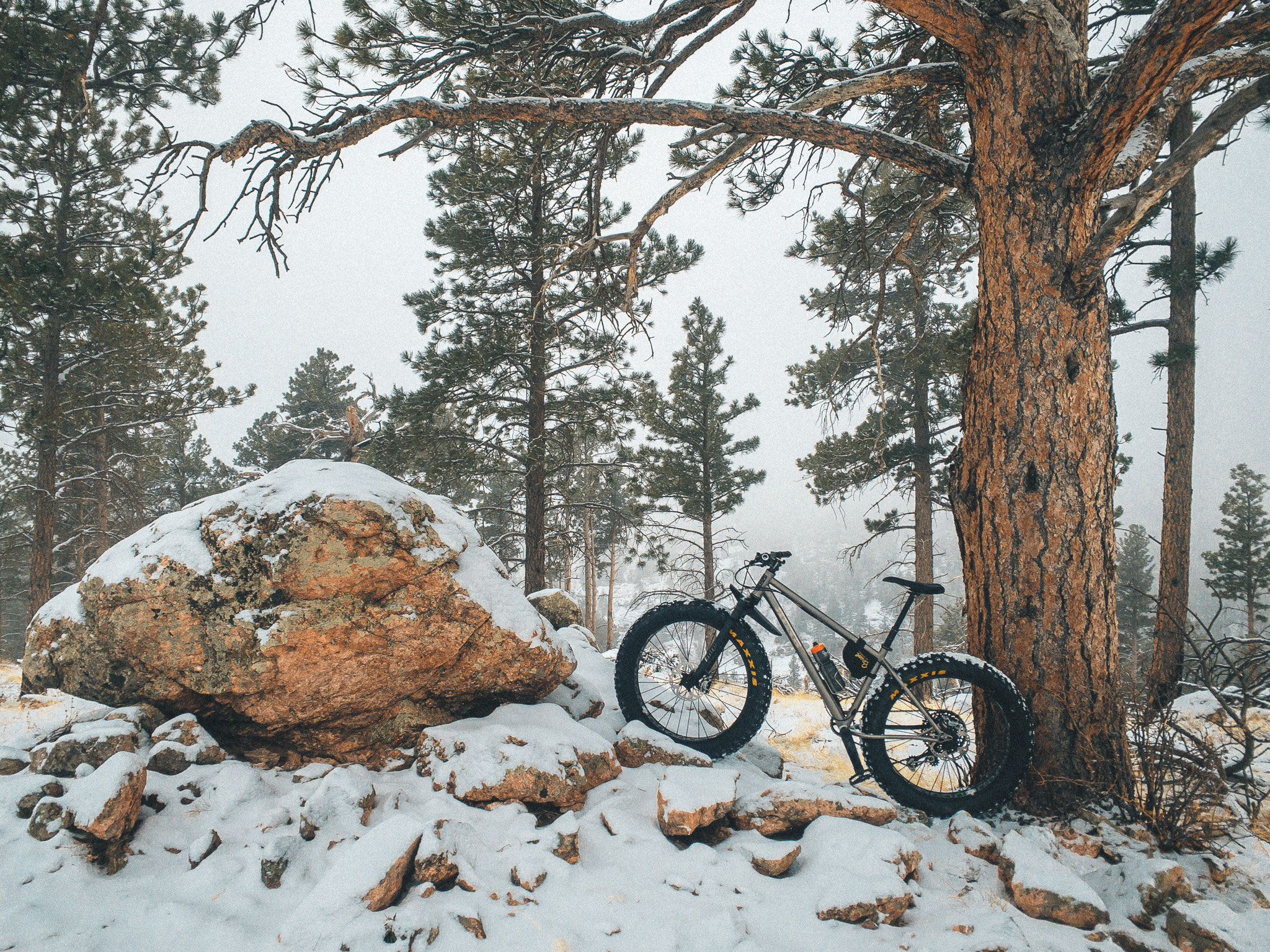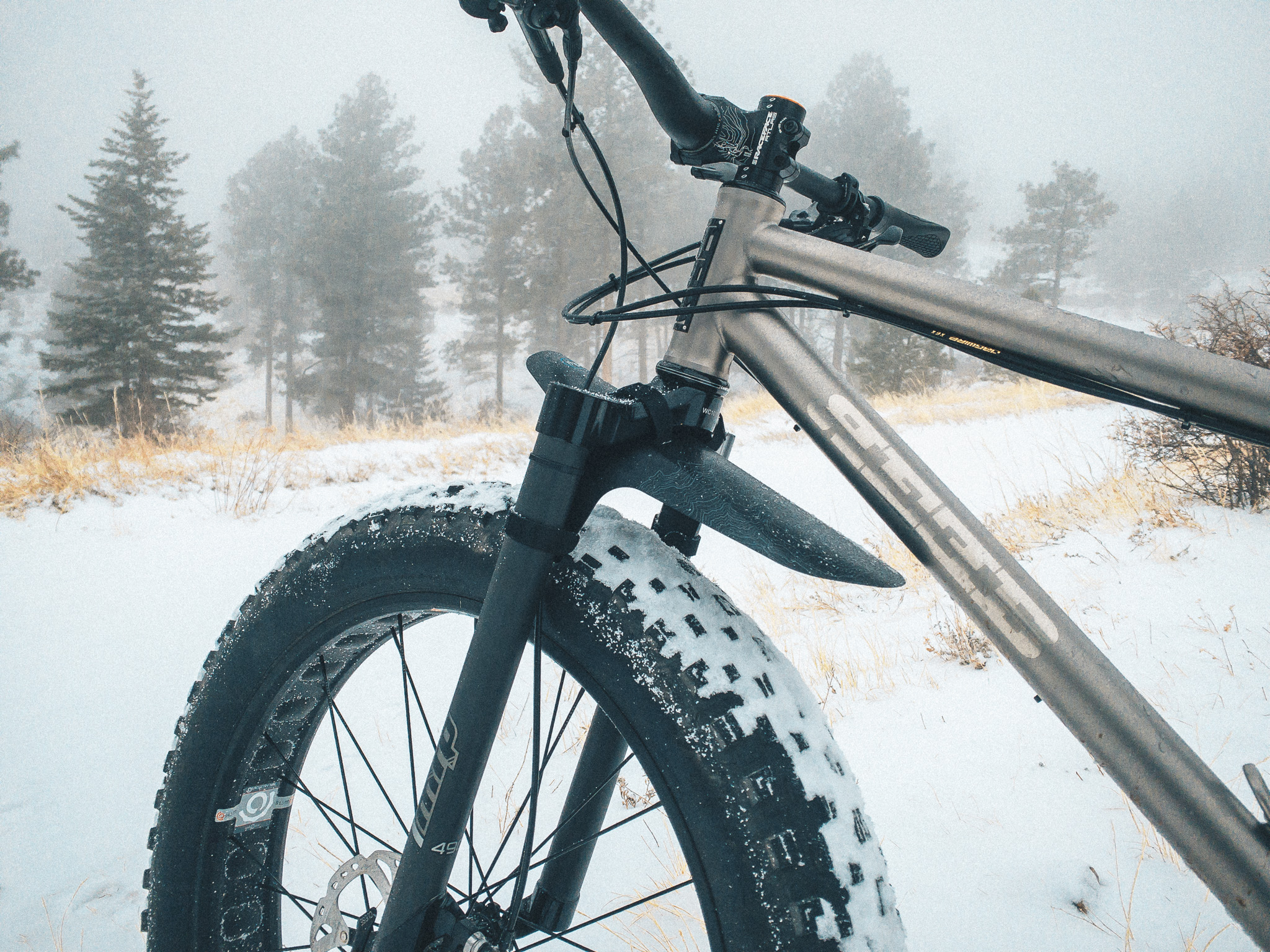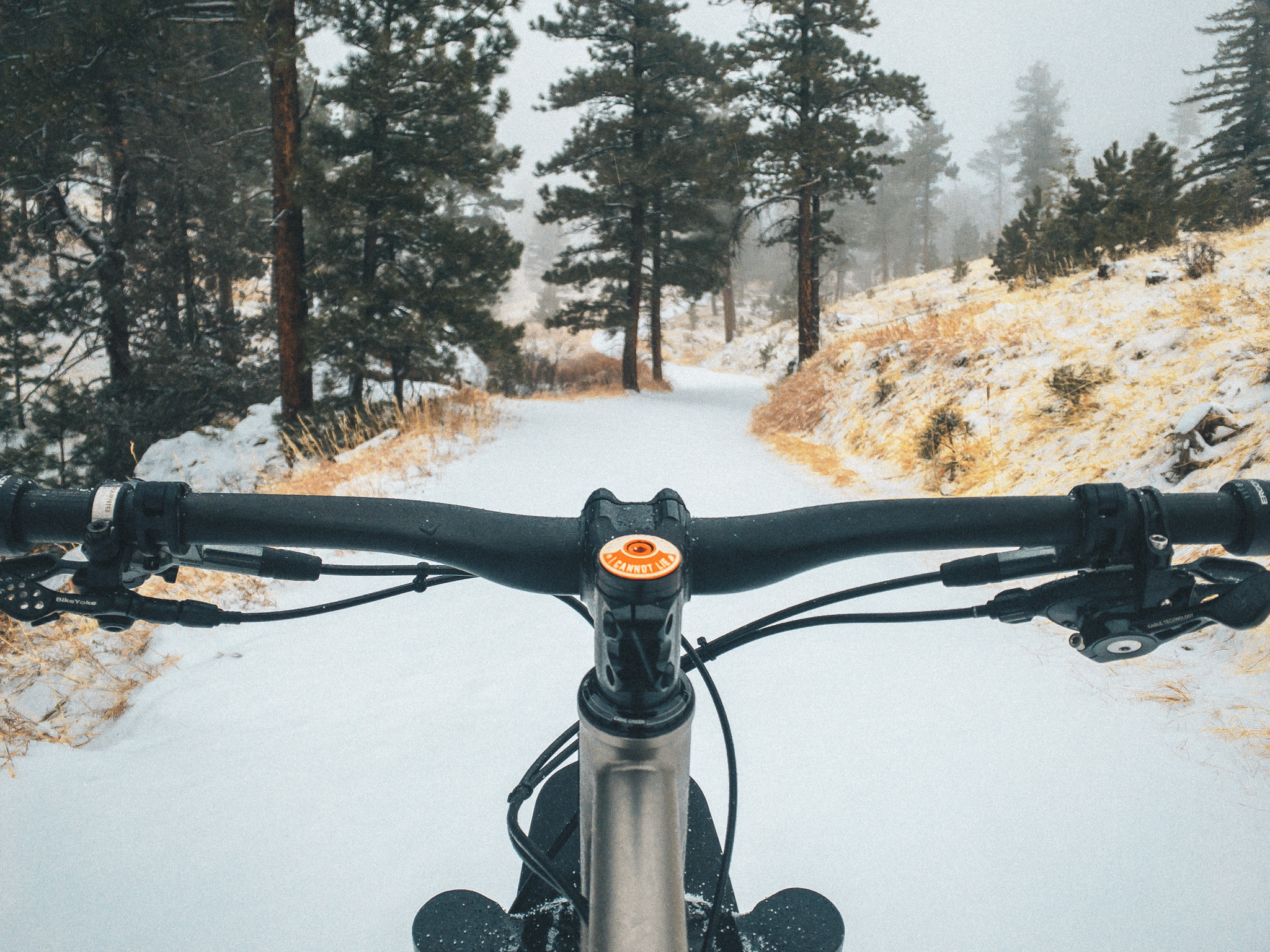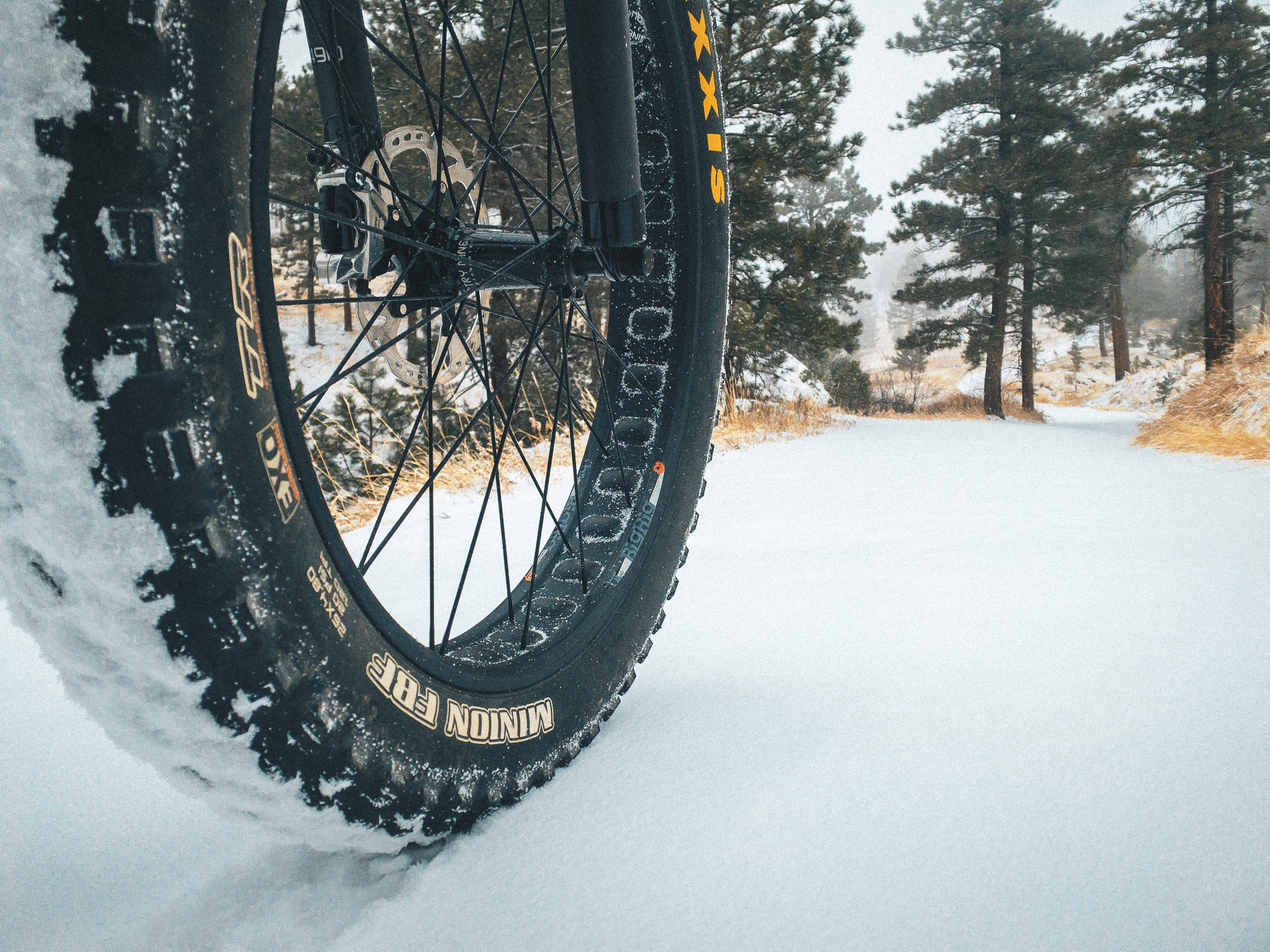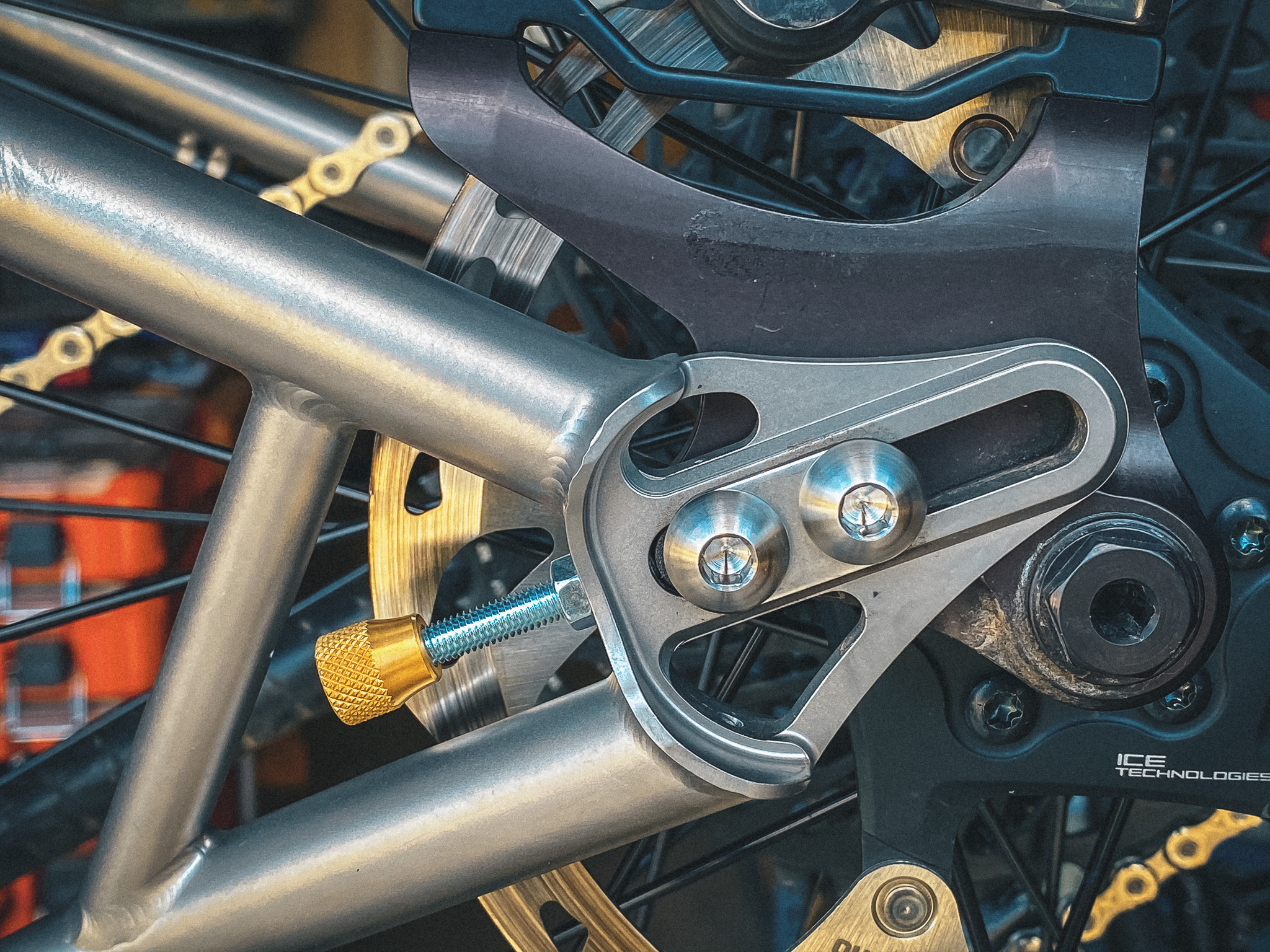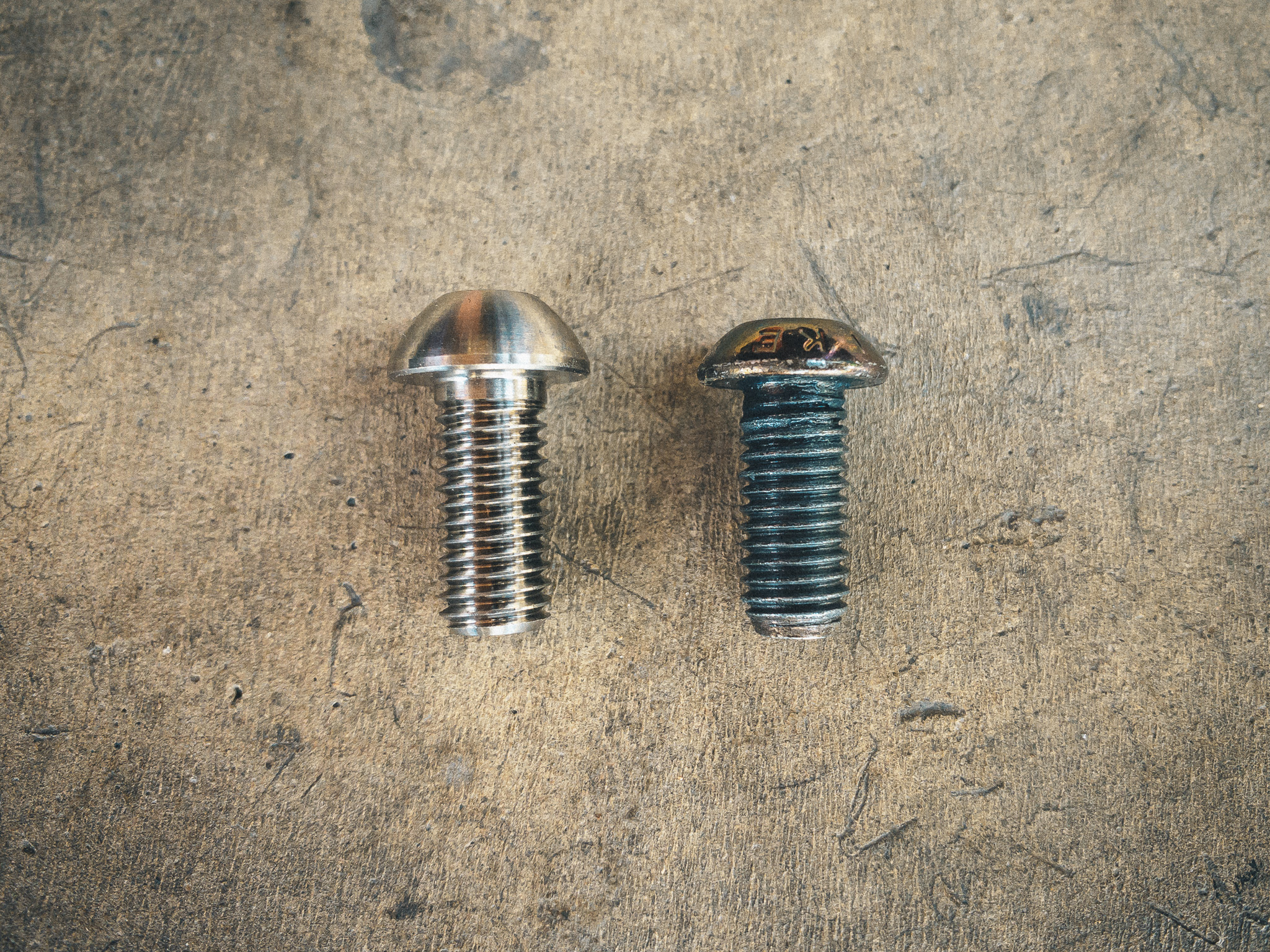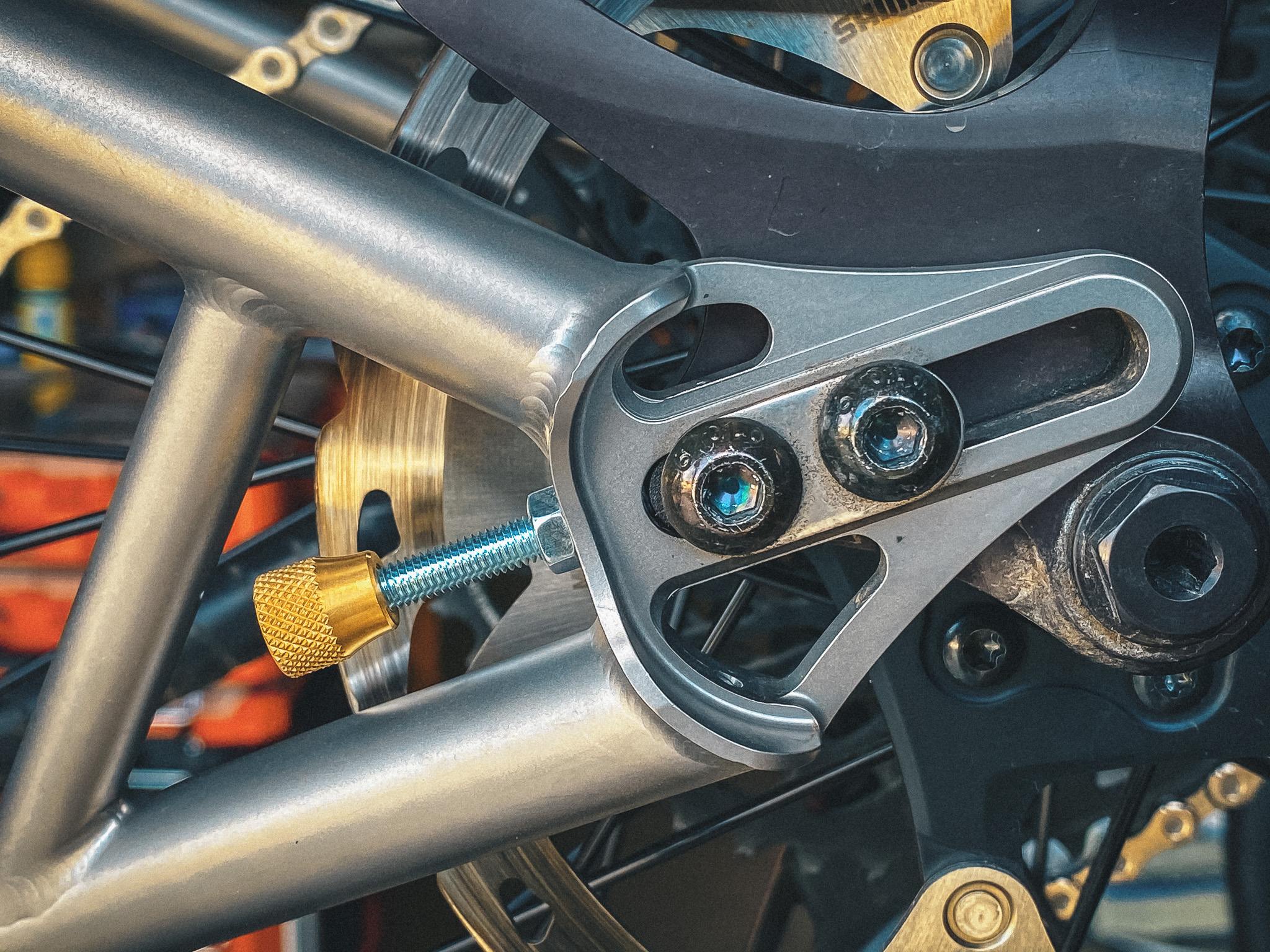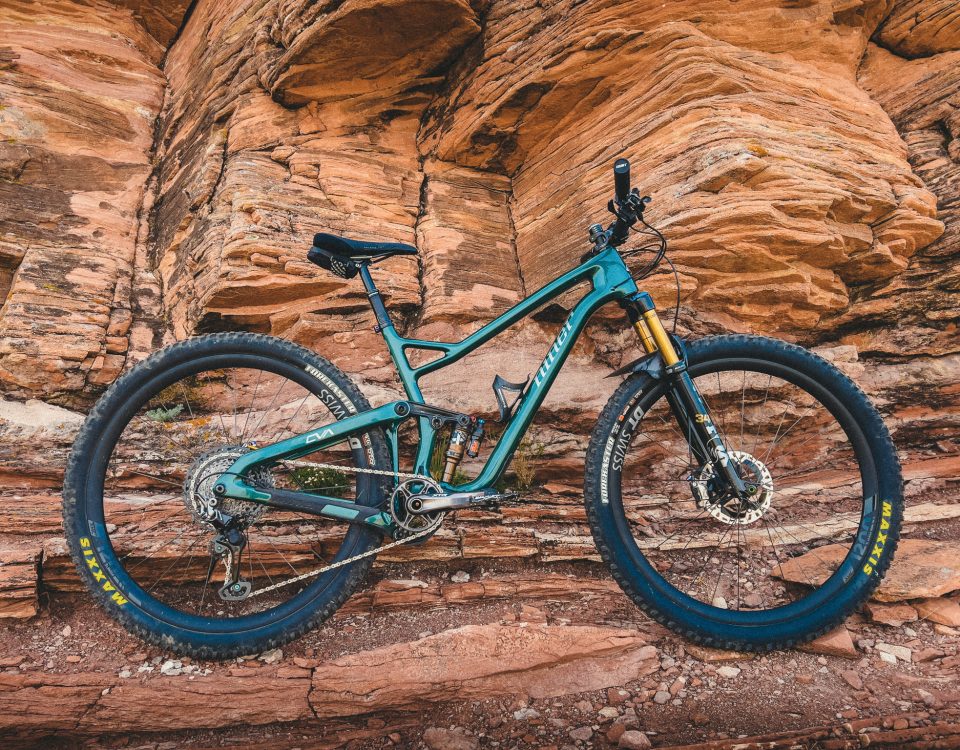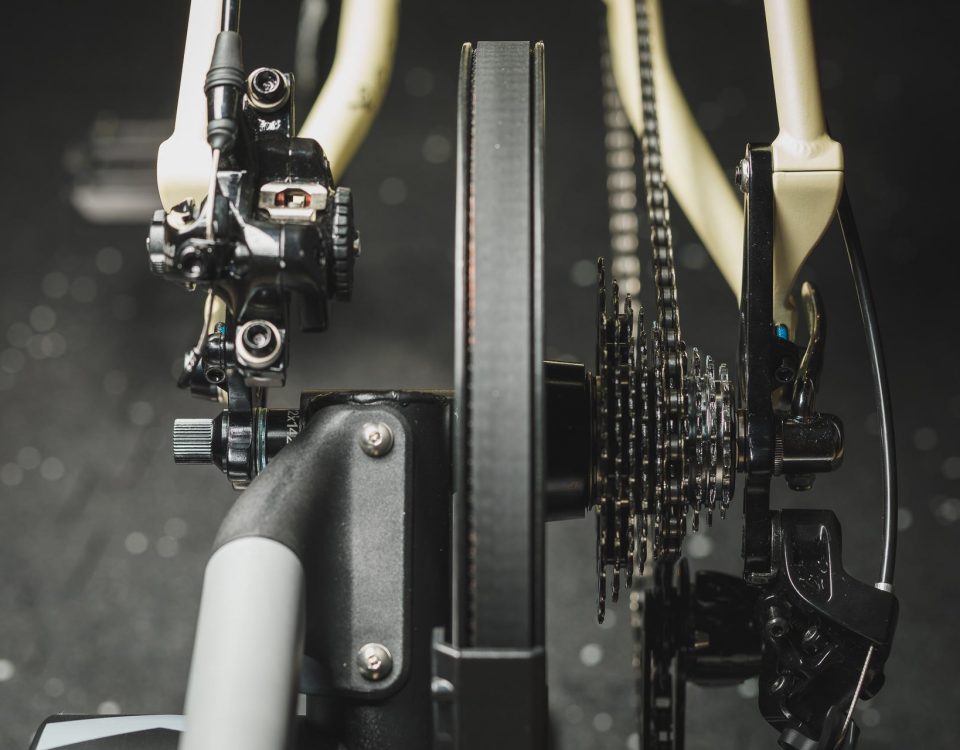
Using the Wahoo KICKR with a 141mm QR Bike
December 13, 2017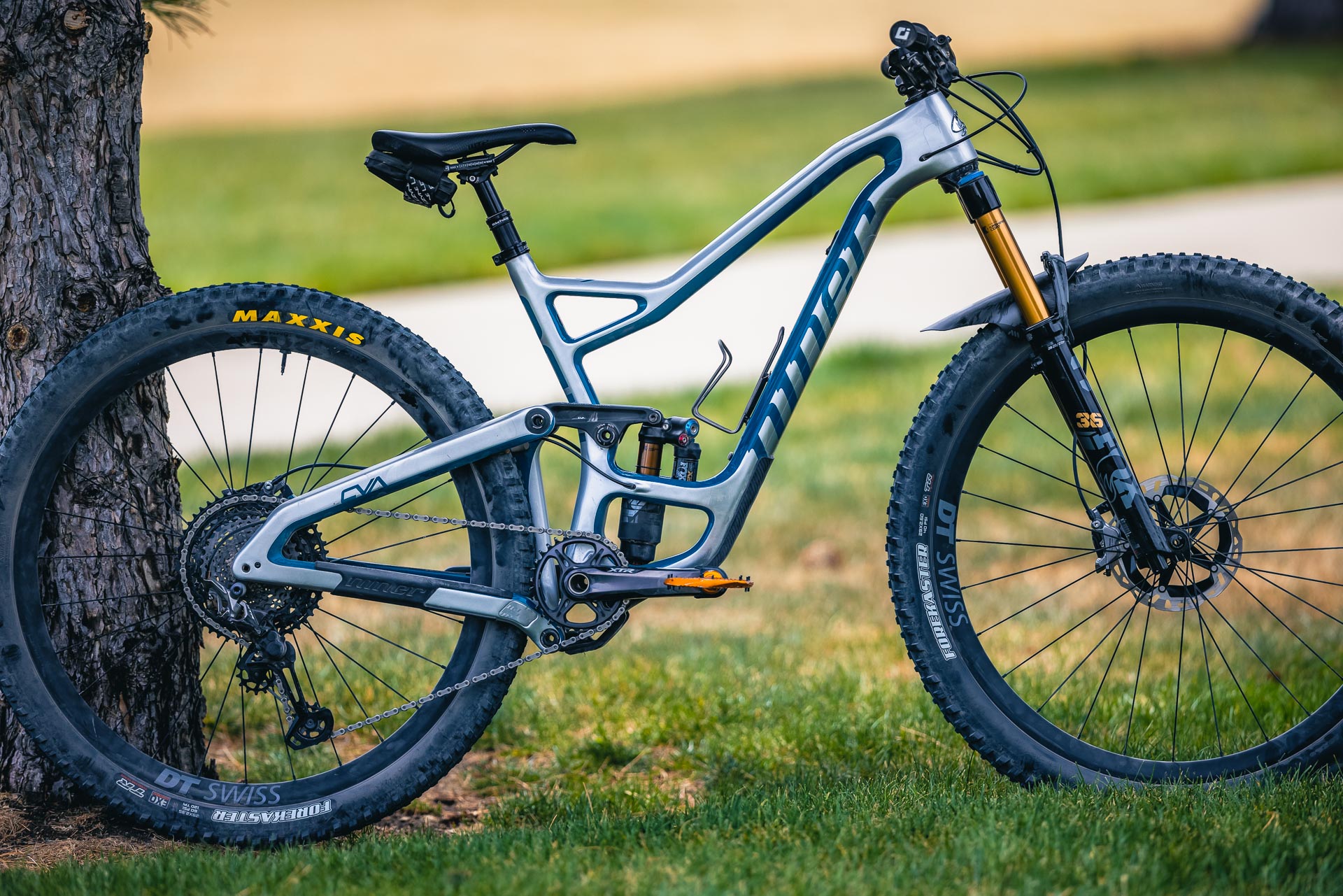
DIY custom-molded Kydex frame protection
June 10, 2021Four-season titanium perfection.
I won't downplay it, or be shamed by the rest of the cycling world… I love riding fat! And not just in snow. There's something visceral and empowering about those huge tires and suspension-free frame. It's a fantastic platform to explore remote forest trails, local singletrack, sandy western terrain, fresh pow, and more. Fat bikes are just plain fun!
REEB is a funky little company. Run by a small crew of passionate riders and beer drinkers, they are permanently intertwined with their namesake and founder, Oskar Blues Brewery. They've got a welding and production "barn" in Lyons, CO and their retail bike shop in Longmont, CO. REEB is chill, knows your first name, and the guys are absolutely stoked on riding. I take a lot of pride knowing the guys that helped me spec the frame, cut the tubes, and welded it together... all about 30 miles from me.
The Donkadonk rides very much like a regular hardtail trail bike, which is a great thing. Riding a rigid bike comes with its own "characteristics", but I chose to forgo a suspension fork to keep the bike lightweight and simple. Running it singlespeed with a belt drive would have been the ultimate freedom, but I'm not that brave. The mountains in Colorado are steep!
The workmanship and welds are absolutely stunning. The bead blasted frame finish with polished "decal" is flawless and a sight to behold. No paint, no stickers, no sharp edges, no misaligned BB shell or improperly cut head tube cups (looking at you Scott Big Jon). Everyone that sees the bike in person just kinda gapes at it for a few seconds before uttering something like "...now that's a pretty bike."
Frame Features
The Donkadonk is a super versatile machine, and can be further tailored to your needs when ordering. Some frame highlights:
- Steel or titanium construction
- Internal dropper post routing
- Two water bottle mounts
- 12x177mm rear with 12x197mm available
- Tire clearance @ 177mm: 26×4.5” or 27.5×4″
- Tire clearange @ 197mm: 26x5.1"
- 100mm threaded bottom bracket (BSA)
- Paragon Machine Works sliding dropouts with replaceable/customizable inserts (run it SS or geared)
- Designed around the RockShox Bluto, 100mm
- Custom powder coat colors available, multiple finishes available for titanium
- Pinion Gearbox, Rohloff, Gates belt drive, and other custom options available
Geometry
I was super stoked when REEB announced a slight geo update to the Donkadonk for 2020, with a 2° slacker head tube angle. At 67.0° it's slack enough to tackle trail with confidence at speed, but not so slack that the bike feels like a bloated enduro sled. The short chainstays (445mm) keep the bike responsive and nimble, and with a sliding Paragon Machine Works dropout, you can fine tune this to your prefernce. You can also use the sliding dropouts to run it singlespeed or adjust fitment with smaller or large tires/wheels.
I opted for the custom 197mm rear axle width so that I could run 26 x 4.8" tires without issue. Plus I already had a 197mm wheelset that I knew I was moving to this bike. I don't regret getting the wider rear end one bit. If nothing else, it gives me the most amount of flexibility for future wheel/tire choices.
The seat tube angle is in a nuetral position that is neither slack nor too upright. Pedaling long rides is super comfortable with no complaints. I've got multiple 20+ mile rides on it, including one ride that was 38 miles with 5,295' of climbing. My note in Strava from that ride: "The REEB rode really good! Super smooth, efficient, comfortable. Nailed the tire pressure. We were humming along, literally and figuratively."
"The REEB rode really good! Super smooth, efficient, comfortable. Nailed the tire pressure. We were humming along, literally and figuratively."
- My ride note from this summer after a 38 mile - 5,295' elevation gain ride on the Donkadonk
My Build
I chose to build this bike up light and high-end. No sense in getting an expensive titanium frame and putting budget parts on it. I went with XTR 4-piston brakes, reused an XO1 Eagle drivetrain, RaceFace Next R carbon cranks, OneUp carbon handlebar, Industry Nine BigRig 845 wheels (tubeless), Maxxis FBF/FBR 4.8" tires, BikeYoke Revive dropper, and an MRP Fat Fork Carbon up front.
Eventually I want to swap out the SRAM Eagle drivetrain for Shimano XTR, but it's super hard to find parts right now due to the pandemic. I'm a big fan of Shimano's smooth shifting. The Eagle drivetrain just feels comparitively unpolished and makes cringe-inducing sounds when shifting sometimes.
I used to run 2-piston XT brakes on my previous fat bike, and while these brakes work great on my regular trail bikes, they are a bit undergunned on a fat bike. Not sure why. Maybe the extra available braking traction or rotational weight of the tires, but the XT brakes required a lot more finger pressure on descents than the 4-piston XTR set.
The OneUp carbon handlebar has a lot of hype around its by-design flex, and I think it lives up to it. I was previously running a RaceFace Next R carbon bar, and really wanted to see if I could increase comfort from the rigid frontend without resorting to a suspension fork. The OneUp will never be mistaken for a suspension fork, but it definitely helped take the sting and wrist jarring down a couple notches.
From OneUp's site (and I concur): "The goal for the new OneUp Carbon Handlebars was to make the best feeling bar possible, something which would let us ride harder for longer. We benchmarked the OneUp bar against the most popular carbon bars on the market as well as foam filled aluminum bars. The results were, on average, a 21% increase in vertical compliance (comfort) coupled with a 28% increase in steering stiffness (responsiveness). These are more than just marginal gains."
Traction & Tires
Those large tires are absolute traction beasts. I have climbed a lot of steep, loose, technical ascents that my suspended trail bikes would have a very hard time with. And that's on dry trail. In snow, there's just no comparison. Before I got my first fat bike, I had a steel hardtail with 27.5" x 3.0" super knobby Surly Dirt Wizard tires. The Dirt Wizards were the burliest tires I could find at the time, thinking they'd be great in the snow (kinda like mud, right?). Nope. They were decent on snow-packed multi-use trails, where the heel strikes from hikers or tracks from other riders provided some traction and hard pack. But fresh snow over 2-3" was just too much. Traction would nose dive into "sketchy AF" territory real fast, and climbing steep trail turned into hiking.
That said, the round profile of fat bike tires does leave something to be desired in hard cornering; at least with the Maxxis FBF/FBR tires I've been running and my riding skill/style. I find that leaning the bike over and digging into hard turns doesn't work as well on 4.8" tires as it does on say a 29" x 2.4" tire. This is something I'm still exploring.
Tire pressure on those big meats is absolutely critical. For me (riding weight ~170 lbs.) anything over 8 psi is unusable. The tires are simply too hard and they basketball off everything. The sweetspot for rocky dry trail riding I've found to be about 6.4-6.8 psi. on 4.8" tires with the Industry Nine Big Rig 845 wheels (84.5mm internal rim width). In snow, it's really about feel and traction. In deep snow that you're packing down (5"+), or soft slick snow (warm days, end of season), I run the lowest pressures of around 1-3psi. Other snow conditions are somewhere in between, depending on depth, speed, and the type of trail. With really low pressures (< 3 psi), you shouldn't be hauling ass, hitting rocks, or taking hard corners. Low pressure is all about floatation and traction in soft, slow conditions so that you allow the tire contact patch to flatten out on the ground. It's not uncommon to notice the sidewalls noticeably flexing and sagging with low pressure.
Fat bikes are famously expensive; often running about double the cost of a 29" or 27.5" tire. However, depending on how and where you ride, these tires have been incredibly durable for me. I was previously running the Schwalbe Jumbo Jim's, which were fast and light, but also had a lot of thin, exposed casing that was easier to damage in rocky terrain. If you only ride in snow or soft conditions like sand, the rubber will probably dry rot before you wear out the tread. Knock on wood, but I have yet to damage a Maxxis FBF/FBR in any way. I preemptively replaced an older set I had been running for over a year, just for fear of all the scrapes, rubs, and low-pressure flex I subjected the sidewalls too.
I do carry a spare tube, and personally think a tire plug kit (my preference is Dynaplug) is essential. Fat bike tires have a lot of casing area, and are seem more likely to suffer a stick or rock punction than a smaller tire (no personal data to back this up though). All that surface area also bodes well for successfully using a tire plug to fix any issues without resorting to a tube.
Speed
I won't beat around the bush here… fat bikes are slower. It's not rocket science, and it's not even necessarily a negative in my book. Those big tires, with all that traction and all that rotational weight, are slower. I definitely wouldn't call the Donkadonk a slow bike though. The geometry is well-rounded, keeps you positioned for efficient and comfortable pedaling, and the short chainstays keep things responsive and snappy. Riding a rigid hardtail is inherently a slower endeavor (at least on non-smooth terrain) than an MTB with some sort of suspension anyway. I can keep up with friends who are riding regular trail bikes when the trail is flowy and relatively smooth. But if you take a couple of big hits on rocks at speed, you'll learn your lesson real fast on a rigid bike. This is not at all a knock on the Donkadonk, it's just the way a rigid hardtail is. Adding a suspension fork would definitely increase speed and comfort in the rough, but as mentioned earlier, that wasn't a priority for me.
Weight
Due mainly to the larger tires and wheels, fat bikes tend to weigh more than standard hardtail counterparts. Again, not rocket science. That said, I've got this Donk down to just about 30.3 lbs. without pedals. For the record, this is within 1 lbs. of my carbon full-suspension trail bike. Not bad!
Capability & Reliability
One of my most loved features of fat bikes is their sheer versatility. There's almost nothing you can't ride a fat bike on or in. Rain, shine, sleet, snow, hail, hardpack, fire road, sand, crushed granite, scree, river bed, pavement, mud, snow, slab rock… anything. I only draw the line when the terrain is very rocky and rough. Not because the bike can't handle it, but because I can't. Riding a rigid bike in rough terrain wears you out in a hurry. Those trails tend to also wear you out on a full suspension bike, so no love lost there in my book.
This bike shines when I don't know the trail area, am anticipating mixed surface conditions, inclement weather, or don't care about speed. There are trails and times when I know I just want to rip down a trail at high speed, and likely that trail is purpose built for MTB... this isn't the bike for that. This is the bike for exploring. This is the bike I take on camping trips when I know I want to get out and ride, but there's nothing in the area on Trail Forks except for some dotted lines on a topo map. This is the bike I ride when I just want to enjoy wilderness and the art of riding, without the pressure and pretense of Strava segment times.
Then throw in the lack of expensive maintenance on suspension pivots, bearings, and fork/shocks. Get a quality bottom bracket (Wheels Manufacturing w/ needle bearing and multiple seals), don't power wash your wheel bearings, lube your chain. Good to go in pretty much any slop. Cleaning optional.
Dislikes?
My complaints with this bike are very few, and not really related to REEB at all, but the components on it. As mentioned earlier, I plan on swapping from Eagle to an XTR drivetrain.
I also swapped out the stock steel bolts on the Paragon Machine Works sliding dropout for their fancy titanium replacements. PMW claims the ti bolt version has a tighter tolerance and stronger hex head, and is less likely to get damaged or stripped when tightening, allowing for greater torque to be used. They call it the MS0071: Titanium BHCS, Sliding Dropouts.
From the PMW maintenance manual for their dropouts: "A word of caution: unless you have a brand new 5 mm wrench, at the upper range of these values there is a possibility of rounding out the socket head on a steel screw. This is not the case with our titanium screws that can be torqued at least 10% more than the above values."
My last issue is the Bike Yoke dropper post continues to slip down inside the Donk's seat tube. The dropper tube has a ribbed textured surface, but it's not enough to resist slipping on the hard, smooth surface of titanium. I have cleaned the post and tube surfaces and cleaned and lube the seat post clamp, with no success. So I recently picked up some carbon paste (which is designed to increase friction on carbon parts without over-torquing), so I'm hopeful this will fix the issue.
